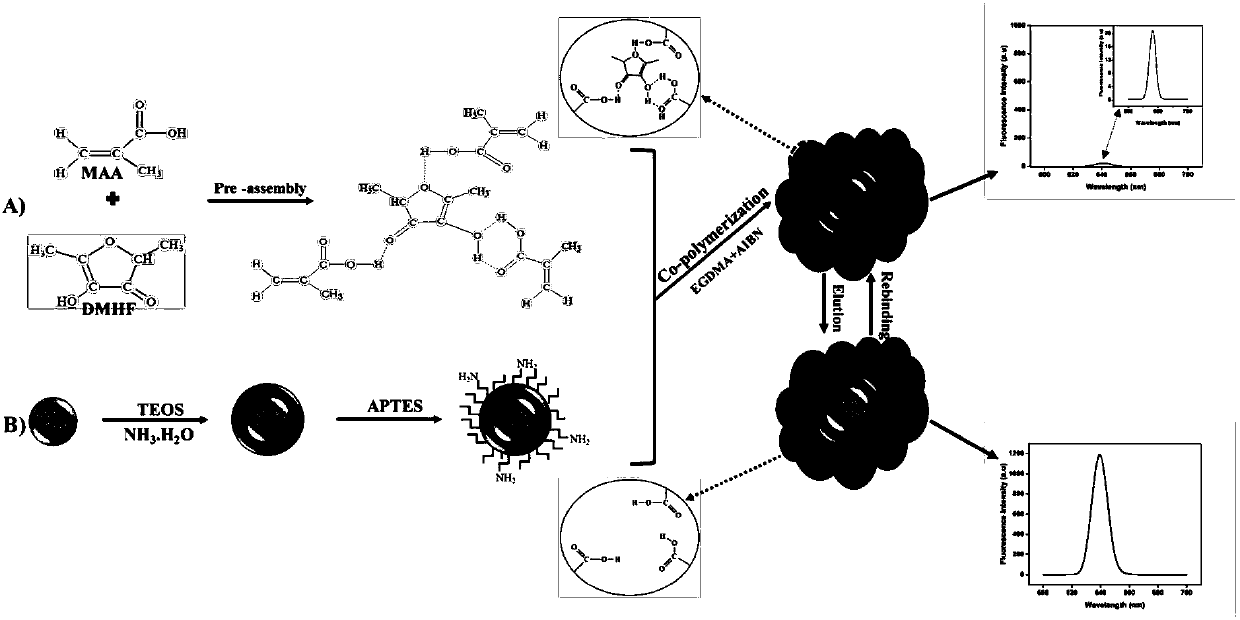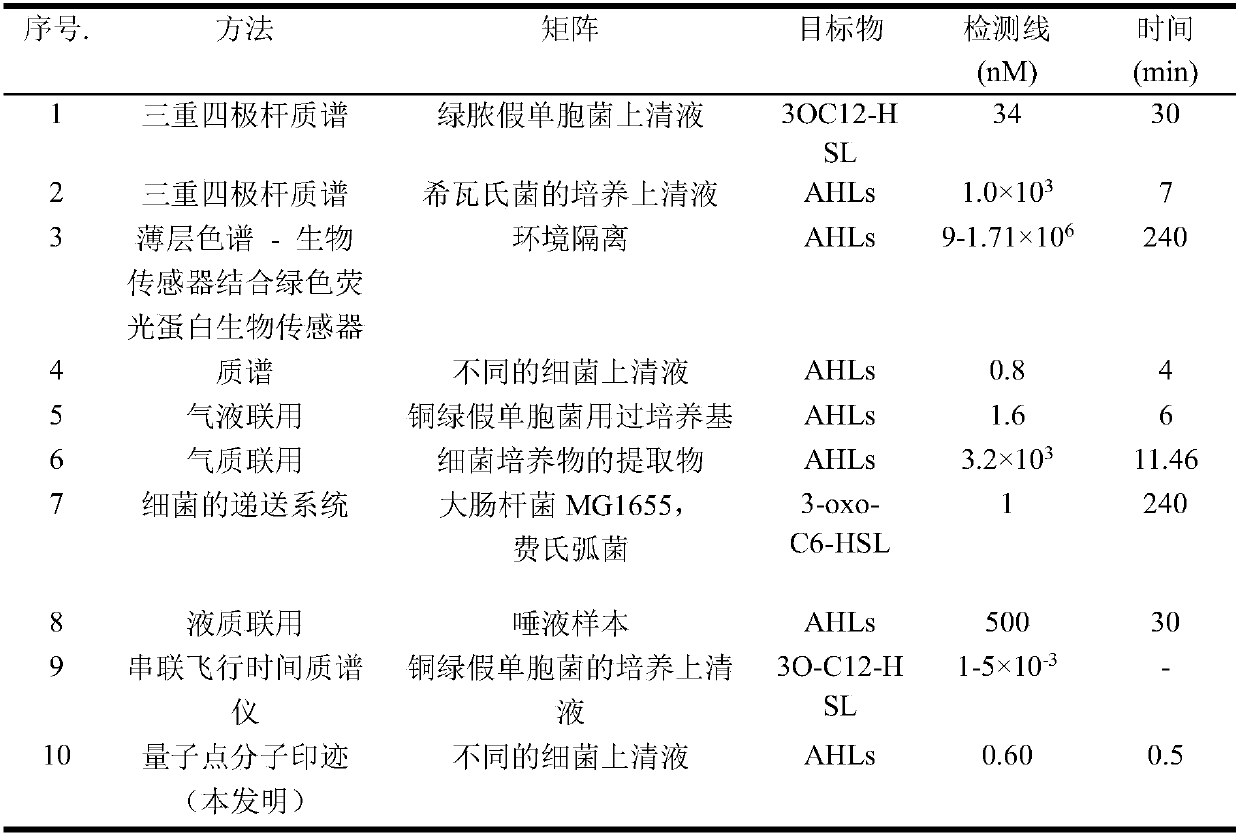Fluorescent probe for detecting and quantifying signal molecule of Gram negative bacteria colony
A Gram-negative bacteria and fluorescent probe technology, applied in the field of fluorescent probes, can solve problems such as limited usability, expensive AHL, and inability to withstand polymerization conditions, and achieve the effects of low price, high sensitivity, and simple operation
- Summary
- Abstract
- Description
- Claims
- Application Information
AI Technical Summary
Problems solved by technology
Method used
Image
Examples
Embodiment 1
[0028] The present invention is achieved through the following technical scheme, the present invention is dissolved in 60mL acetonitrile by furanone (DMHF) analogue template (0.1mmol) and methacrylic acid (MAA) monomer (0.4mmol), and stirred at 25 ℃ The mixture allows it to self-assemble. After 24 h, a certain amount of CdSe / ZnS quantum dots, ethylene glycol dimethacrylate (EGDMA) (1 mmol) and azobisisobutyronitrile (AIBN) (12 mg) were added and sonicated for 5 min, followed by N 2 Purge for 20 minutes. The mixture was magnetically stirred at 600 rpm in a 60°C water bath for 24 hours. After polymerization, the mixture was cooled to room temperature, the precipitate (QDs@MIP) was collected, template removal was accomplished by a combination of sonication and centrifugation under optimal experimental conditions, and QDs@MIP was dispersed in ethanol acidified with 0.5 mol / l hydrochloric acid , followed by sonication and centrifugation to collect the precipitate. This process w...
PUM
| Property | Measurement | Unit |
|---|---|---|
| correlation coefficient | aaaaa | aaaaa |
Abstract
Description
Claims
Application Information
 Login to View More
Login to View More - R&D
- Intellectual Property
- Life Sciences
- Materials
- Tech Scout
- Unparalleled Data Quality
- Higher Quality Content
- 60% Fewer Hallucinations
Browse by: Latest US Patents, China's latest patents, Technical Efficacy Thesaurus, Application Domain, Technology Topic, Popular Technical Reports.
© 2025 PatSnap. All rights reserved.Legal|Privacy policy|Modern Slavery Act Transparency Statement|Sitemap|About US| Contact US: help@patsnap.com



